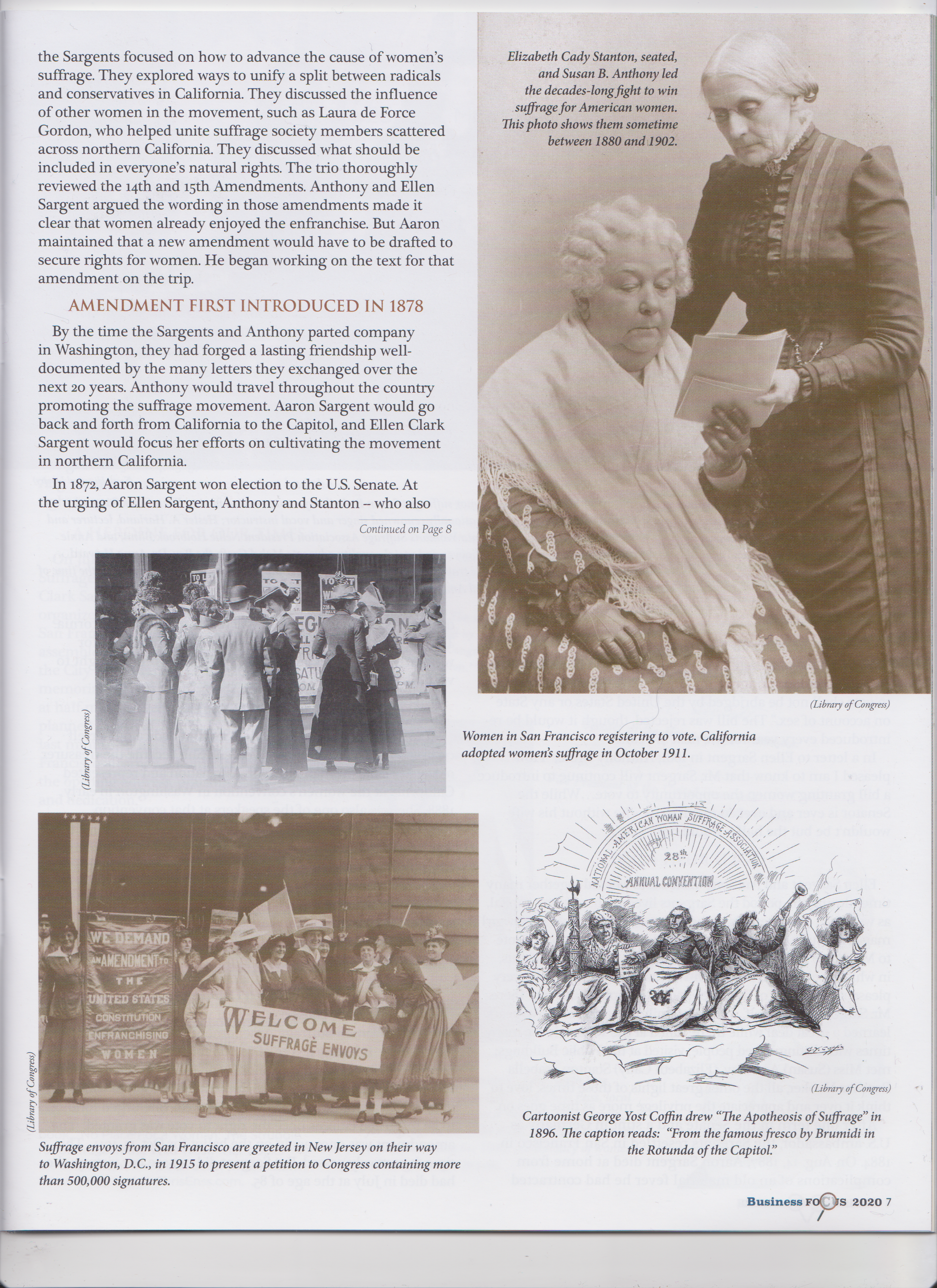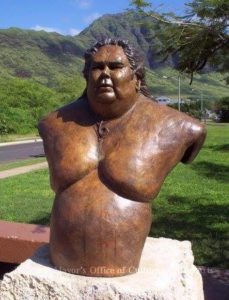March is Women’s History Month
The Story of Ellen Clark Sargent
by Judith Hurley-Prosser
This tells the history of Ellen Clark Sargent and her role as a suffragist and the work she did towards the 19th Amendment, giving women the right to vote.
Help us get the sculpture of Ellen Clark Sargent seen.





Article from Nevada County Business Focus
Nevada City Union Articles
Jan-Michelle Sawyer aims to celebrate the 100th anniversary of the passage of the 19th amendment, which she says has roots in Nevada City with bust of Ellen Clark Sargent.



Public Sculpture in Your Community … How to Get It Done.
Don’t wait for government officials or a rich art patron to step forward to honor in sculpture an individual for your community. “Grass Roots Sculpture” is a method that Jan-Michelle has perfected when people have expressed a desire to have sculpture created for their community and public-at-large.
Jan-Michelle can guide you through the steps necessary to complete a fund raising campaign in order to pay for the cost of the sculpture. She can also show you how to collaborate with government officials in selecting a suitable site for the placement of the public sculpture. “Grass Roots Sculpture” works for both contemporary and realistic commemorative sculpture.
Interested parties should be affiliated with a non-profit organization specifically committed to working on accomplishing the goal of bringing sculpture to their community.
Please email Jan-Michelle at jmsculptures@sbcglobal.net to begin dialogue and discussion of your community’s needs.
Vandalism to Public Sculpture
On a recent visit to see the portrait sculpture of Israel Kamakawiwo’ole in Waianae, I discovered that the bottom fishhook that rested on IZ’s chest was missing, i.e. apparently stolen. Who would do such a thing? And who would evoke such negative mana against a man who gave so much of himself to the people of Hawaii? I discovered the missing fishhook when I lifted a string of leis that draped his chest in order to inspect the condition of the bronze. At first my eyes hit a blank stare, thinking that there was something unusual about how his chest looked. It took a few seconds to realize that the fishhook was gone.
Vandalism is the willful destruction of property… in this case, property that is maintained by the City and County of Honolulu on behalf of the people of Hawaii. It is in fact a crime to deface public property and also expensive to repair. It is unlikely the City and County of Honolulu will pay to have the fishhook recast in bronze and welded back onto IZ’s chest. The steps to do so are numerous and may be too costly for the City to justify. So, the sculpture of IZ will be missing an integral piece that was once part of the original sculpture… the beloved fishhook that he wore faithfully on his chest.
Vandalism to the IZ sculpture and to other sculpture that has been reported in the news is an aggressive act not only to this specific sculpture of IZ which honors the man and his music, but it is an unforgivable act against the people of Hawaii. Vandalism sends a message that the perpetrator doesn’t care about others, especially the sacredness of a man’s image or the hard work of an artist to bring aesthetic beauty to a community. Another sculpture that suffered vandalism and graffiti is the cement sculpture of a man sitting on a bench reading a newspaper located in downtown Honolulu. The piece had been tagged by vandals. Fortunately, someone on their own initiative painted over the graffiti bringing the sculpture back to life.
Many studies on why a person commits vandalism often conclude that the vandal is possibly angry, bored, seeking revenge or is acting out of a distorted sense of defiance. Researchers on this topic emphatically state that vandals possess a self hatred not only to others but of themselves as well.
There are positive steps that concerned citizens can take to reduce acts of vandalism in their community. The following is an abbreviated list of action guidelines issued by the National Crime Prevention Council.
- Learn about the costs and the effects that vandalism has on a neighborhood by working with law enforcement, school officials and community leaders.
- Teach what you learn about vandalism to others. Speak to people about these problems.
- Start a cleanup crew at your school or in your neighborhood. Ask local businesses to donate supplies needed to clean up graffiti as soon as the vandalism is discovered.
- Write articles in your school or community newspaper on the costs of vandalism and graffiti.
- Look for ways to get known vandals involved in activities that are positive and non-destructive.
- Start a vandalism hotline in cooperation with law enforcement and school officials in which people can report incidents of vandalism and gives tips in identifying vandals.
- Work with faith organizations to adopt a street or a park with your school, youth, or community.
- Get involved. Don’t be afraid to report vandalism when and where it happens.
Finally, as the sculptor, I plan to repair the commemorative sculpture of IZ by recasting the fishhook and welding it back onto IZ’s chest. It won’t happen tomorrow, but hopefully one day we can get the full image of IZ restored to his original glory. It’s important to me personally and to the community-at-large to preserve this public sculpture which honors the man whom all of Hawaii has come to respect and love.
The commemorative sculpture of IZ is located at the Waianae Neighborhood Community Center in Waianae, Oahu.
